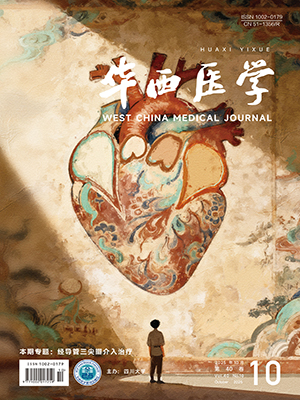Objective To construct an intervention program for postoperative fear of falling in elderly patients with hip fracture based on cognitive behavioral theory. Methods Based on cognitive behavioral theory and literature review, an initial draft of intervention plan for postoperative fear of falling in elderly patients with hip fracture was constructed. From January to March 2025, after two rounds of expert consultations and revisions, the final plan was formed. Results A total of 16 experts across the country were invited to participate in two rounds of Delphi expert consultations, covering areas such as orthopedic clinical nursing, orthopedic clinical medicine, nursing education, nursing management, rehabilitation therapy, and psychological therapy. The active participation rates for the two rounds of consultations were 94.12% and 100.00%, respectively. The expert authority coefficients were 0.860 and 0.907, respectively, and the Kendall harmony coefficients were 0.369 and 0.524, respectively. Ultimately, a program composed of 5 primary indicators (fall fear management team, fall fear management goals, fall fear assessment, fall fear intervention measures, and post-intervention effect evaluation), 17 secondary indicators, and 31 tertiary indicators was constructed. Conclusion The intervention program for postoperative fear of falling in elderly patients with hip fracture based on cognitive behavior theory constructed in this study is scientific and operable, which can provide reference and guidance for clinical nursing staff.
Citation:
DONG Fanghui, HU Sanlian, ZHANG Yajuan, WEI Xiaomei. Construction of intervention program for postoperative fear of falling in elderly patients with hip fracture based on cognitive behavioral theory. West China Medical Journal, 2025, 40(9): 1431-1436. doi: 10.7507/1002-0179.202508064
Copy
Copyright © the editorial department of West China Medical Journal of West China Medical Publisher. All rights reserved
| 1. |
|
| 2. |
|
| 3. |
|
| 4. |
|
| 5. |
|
| 6. |
|
| 7. |
|
| 8. |
|
| 9. |
|
| 10. |
|
| 11. |
|
| 12. |
|
| 13. |
|
| 14. |
|
| 15. |
|
| 16. |
|
| 17. |
|
| 18. |
|
| 19. |
|
| 20. |
|
| 21. |
|
| 22. |
|
| 23. |
|
| 24. |
|
| 25. |
|
| 26. |
Scheffers-Barnhoorn MN, van Eijk M, van Haastregt JCM, et al. Effects of the FIT-HIP intervention for fear of falling after hip fracture: a cluster-randomized controlled trial in geriatric rehabilitation. J Am Med Dir Assoc, 2019, 20(7): 857-865.e2.
|
| 27. |
|
| 28. |
|
| 29. |
|
| 30. |
|
| 31. |
|
| 32. |
|
| 33. |
|
| 34. |
|
| 35. |
|
| 36. |
|
| 37. |
尹航. 老年髋部骨折患者肌肉衰减症、营养状况与跌倒风险的相关性研究. 延吉: 延边大学, 2020.
|
| 38. |
|
- 1.
- 2.
- 3.
- 4.
- 5.
- 6.
- 7.
- 8.
- 9.
- 10.
- 11.
- 12.
- 13.
- 14.
- 15.
- 16.
- 17.
- 18.
- 19.
- 20.
- 21.
- 22.
- 23.
- 24.
- 25.
- 26. Scheffers-Barnhoorn MN, van Eijk M, van Haastregt JCM, et al. Effects of the FIT-HIP intervention for fear of falling after hip fracture: a cluster-randomized controlled trial in geriatric rehabilitation. J Am Med Dir Assoc, 2019, 20(7): 857-865.e2.
- 27.
- 28.
- 29.
- 30.
- 31.
- 32.
- 33.
- 34.
- 35.
- 36.
- 37. 尹航. 老年髋部骨折患者肌肉衰减症、营养状况与跌倒风险的相关性研究. 延吉: 延边大学, 2020.
- 38.




